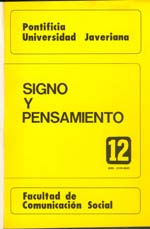Abstract
Entender la literatura como palimpsesto es afirmar, con Thomas De Quincey ninguna obra está muerta sino sólo dormida “Cada generación parece enterrar a todas las anteriores, aunque en realidad ninguna se haya extinguido”. En tender la Literatura como palimpsesto es decir, por lo mismo, imbricación de escrituras, constelación de signos, intertextualidad de discursos, tejido de símbolos. La literatura es como un libro, como un inmenso libro hecho de infinitas escrituras. Así entendida la literatura, podemos entonces formular una segunda afirmación: la literatura se mueve en un doble movimiento, escritura y lectura. En una primera instancia es eminente testimonial, empieza a formar parte de la tradición; en un segundo momento, es actualización, apropiación presente, dominio y elección, espacio para la libertad. Escribir y leer, he ahí la dialéctica propia del gran libro que hemos denominado literatura. Ahora bien, como pensaba Jorge Luis Borges, la lectura es “la técnica del anacronismo deliberado”, por tanto, leer es volvernos contemporáneos de ese pasado propio de lo escritural. Cuando leemos “El Quijote”. Somos, de alguna manera autores de “El Quijote”. Y si además escribimos esa lectura, que es el requisito para que la critica literaria sobrepase el mero diletantismo, entonces si que es cierto que el palimpsesto completa su ciclo interminable. Escribir, leer y escribir, ese ha sido y es el recorrido de todo nuestro palimpsesto-biblioteca.This journal is registered under a Creative Commons Attribution 4.0 International Public License. Thus, this work may be reproduced, distributed, and publicly shared in digital format, as long as the names of the authors and Pontificia Universidad Javeriana are acknowledged. Others are allowed to quote, adapt, transform, auto-archive, republish, and create based on this material, for any purpose (even commercial ones), provided the authorship is duly acknowledged, a link to the original work is provided, and it is specified if changes have been made. Pontificia Universidad Javeriana does not hold the rights of published works and the authors are solely responsible for the contents of their works; they keep the moral, intellectual, privacy, and publicity rights.
Approving the intervention of the work (review, copy-editing, translation, layout) and the following outreach, are granted through an use license and not through an assignment of rights. This means the journal and Pontificia Universidad Javeriana cannot be held responsible for any ethical malpractice by the authors. As a consequence of the protection granted by the use license, the journal is not required to publish recantations or modify information already published, unless the errata stems from the editorial management process. Publishing contents in this journal does not generate royalties for contributors.


